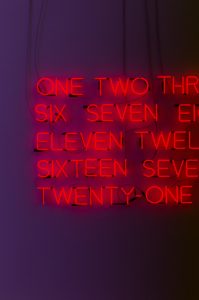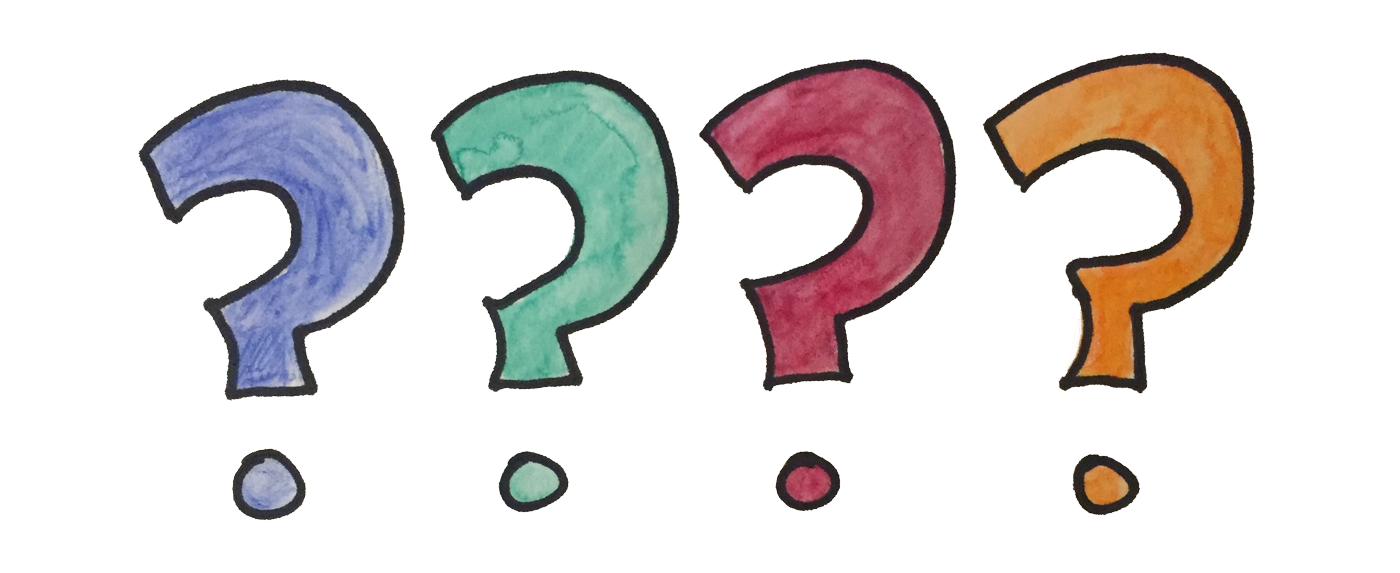
Many dreams don’t become reality simply because of inaction. Continue reading Not Zero; One

Many dreams don’t become reality simply because of inaction. Continue reading Not Zero; One

I have so many memories of my childhood. The ones that stick out the most in my mind, however, are the memories that are attached to strong emotions.
In fact, my earliest memory is linked to sheer terror. I remember 9/11. Many people recall the exact place they were when they heard the news of the Twin Towers. But not everyone was under two years old when the attack occurred.
That’s right. I was just 21 months old. We were traveling with friends. My dad was in the passenger seat of the 12-passenger van we were traveling in. My mom was beside me, and I was enjoying the ride in my car seat.
Then dad got the call. I have no recollection of anything he said. I remember the look on his face as he told my mom what had happened. And I remember the stab to my heart that makes the moment stand so clear in my mind.
I don’t know if I picked up an emotion from my parents, or if even at that young age I realized that this event was much, much bigger than what anyone imagined.
Regardless, it’s interesting how fear makes memories stand out. Because the emotion puts your whole body on full alert, your senses are extra sharp, ready to make a quick run or to stand guard and fight.
The memories stick out because of all your senses being fully receptive to surroundings.
If I want to remember a moment for years, I take this perspective and act on it. I wear certain scents of perfume or chapstick on days I don’t want to forget. Or I take a moment to observe my surroundings, drinking in my environment.
Try it: open your eyes wide, to take in all you can see. Take long, deep breaths, letting the smell of the moment flow through your lungs. Stay silent and listen for the smallest noise that may spark your memory later Touch your face with your hand, or run your fingers through some sand nearby. Taste raindrops as they fall. Live the moment to the fullest extent possible.
Choose to alert your senses and train your brain to remember the good things in life. Try it: it’s pretty fun!
When explorers set out on a new adventure, they always have tools. Two of the biggest are a compass and a map. Together, they give the explorer a guide to the trail he is conquering.
Even if he walks into uncharted territory, the explorer keeps his map close by, changing details or adding landmarks as he presses forward. He constantly compares the compass and the map with his environment.
Your goals are your compass. Your schedule is your map.
You may not be the type of person who needs a detailed schedule to get things done. Yet even a simple map is a huge advantage in the hand of an explorer. Likewise, setting priorities for the days ahead helps make your ideas reality.
I sent this week’s goals to a mentor as an accountability practice this evening. I am exhausted. I know I need a long night’s rest to prepare me for the week.
But something about taking the couple moments to plan the week gives me energy. I now have a priority for each day.
It’s amazing how even twenty minutes of thinking and can put even the biggest projects into perspective.
My compass for the next while is my podcast. My map is the weekly plan I lay out.
And it’s great to be compared to an explorer. You’re welcome for the simile!
This week, check your compass and your map. Are you moving in the direction you want to?
Press on, adventurer!

They told me writing every day would benefit me. I could understand the discipline that would come. I knew there would begin to be a flow of ideas once I stuck the writing out for awhile.
Those were the benefits I knew would come before I even started. But there were so many unseen blessings of sitting down, every day, and putting my thoughts on my blog. Continue reading Hidden Benefits of Daily Writing

“Hey, what can you tell me about podcasting?” I asked a friend one day when the idea behind Edcuationeering was new in my mind.
“Actually,” she replied, “I just did an episode where I covered the basics of creating your own podcast. Check that out, then we can do a quick call.”
I did, and fell in love with her podcast, Photosynthesis, immediately. I began putting the ideas in my mind to use, and before I knew it I was hosting my very first interview.
Later on, after searching all the free music download sites on the internet, I came across an article by a fellow Praxian about his music project. I reached out to him about possible intro music for my new idea.
Immediately, he jumped on it, and late one night, he sent me a beautiful soundtrack for the podcast.
But what about a logo? At just that moment, another friend posted on Workplace about a project he was doing: creating logos. He wanted actual projects if at all possible. So I messaged him my abstract concepts surrounding the podcast. He developed the fascinating bow-and-arrow logo which has become the face of an idea that birthed itself in my mind only two months ago.
All of a sudden I realized: this is networking! Before, it was an elusive concept that every entrepreneur around me attested to. Now, it was a real process coming alive in my personal experience. I looked around me: all those emails and phone calls promoting my idea were building social capital. Each interview I host gives me one new connection built over an hour-long conversation.
And I couldn’t help but laugh at the big deal most people think networking has to be. I am by no means an expert, but haven’t humans connected with each other for thousands of years?
Yet there are tips from gurus everywhere: Go to this conference, or do that one simple trick that will solve all your social issues.
The idea of “networking” has become so overused that we have lost what networking power we may have had. Instead of building relationships based on mutual goals or common ideas, we have created a formula which we employ to robotically reach out to others.
Don’t miss the chance of genuine friendships because of being so focused on finding the perfect connections. Stop networking and start being:
Alec Steele is a famous Youtuber who makes videos that document his process as a blacksmith. He dropped out of school at age 16 to focus on his passion.
He’s found his niche in an area not many Youtubers frequent. But the reason his videos get so many views is due mostly to his love of the trade and general zest for life. It comes through in everything he does.
Show your work. Document the process. Do what you do with passion; people are naturally drawn to those who love their life.
Jesus’ parents found him in the temple at age 12, after searching for him for three days. What was he doing? Networking. He was engaged in the deep questions of rabbinical discussion that were common in the Jewish culture. He simply threw himself into the topics at hand, and the people around him were amazed at the wisdom of his questions and answers.
One of the most influential men to walk this earth, Jesus didn’t have a special 3-step formula for getting people to like you. His networking advice was, “Do unto others as you would have them do unto you.”
This concept is a good one for everyone to ponder. We love when others show interest in our lives. We gravitate toward people who like us. We love people who listen to our thoughts and dreams.
Want networking advice? Be the person who cares genuinely about others.
A local company called Knightly Creations had a stand at the lumberjack festival my family went to recently. Their stand with its sparkly customized objects attracted my younger sisters, who were my charges for the day. They got caught up with the idea of the raffle being held. After I explained the concept of probability and warned them of the risk involved, both girls decided to invest two dollars into the raffle.
The day wore on. I didn’t expect to ever receive a call. The odds were definitely stacked against us. But I was surprised to pick up my phone and realize that the owner of the very stand where we had bought the tickets was calling me.
“Hey,” he said, “We drew the tickets recently, and your sisters’ tickets were unfortunately not drawn. But I wanted to make them each a mug anyway.”
I was honored, and my little sisters were thrilled. A week later they had their customized pink mugs, complete with unicorns an sparkles.
This random act of kindness had a huge impact on me. Because the owner of that stand noticed my little sisters, he created immense value for me. He didn’t have to ask me to post reviews all over social media highlighting the awesome customer service of the company.
I’ll bet he had no idea that he was networking. He was just creating value for other people, being genuinely interested in the learning process of my sisters.
It’s not about doing everything just right. Be yourself, create value for others, and reach out to people. When you get down to the basics, it’s achievable.
For more resources on this idea of networking, check out:

Cool facts about me that most people don’t know:
May your aim be true! On to the next adventure…

It’s interesting to me how much difference it makes just getting one thing done.
I had been pushing off the nitty-gritty aspects of my podcast, spending time instead focused on emails and interviews. I’m proud of what I did there, but there are still things that need to get done. Things that don’t come as easily as interviews and emails.
I need to create my MailChimp list, and have the first template ready for the release on April 1. I have to finish editing the audio for at least three episodes. I have to record the first episode for the podcast, explaining my view on education and giving helpful resources that listeners can come back to. I need to get the webpage up for the podcast, and put together a good Facebook page.
None of these things are hard in themselves. None of them take very much time when it comes down to it. But somehow, in my mind, those things got pushed to the back. Somehow I made these actions feel like a big deal.
Today, I recorded the intro for my podcast. Simple step. I added it to the intro music that Lucas Doherty, a fellow Praxian, recorded for me. I now have an MP3 file of the intro ready to go.
Just getting that one little thing done was wonderful for my perspective. Now, it doesn’t look as hard to finish the rest. Now, I know that I can complete my project by the date I set for myself. All it took was taking the first step and getting to work.
Feeling unmotivated or stressed about a project? Here’s my tip: break it down into small parts that you feel you can complete. Then, as Nike advises, Just do it.
I enjoyed dramatic interpretation to the fullest extent during my high school years. My favorite presentation ever was an individual event I did with my homeschool group, Classical Conversations.
The rules for the presentation were simple: take another author’s work and put it into a speech of your own.
I chose Mark Twain’s Tom Sawyer. I have always been a fan of Twain’s dry humor. He’s a master storyteller: Tom Sawyer was real and alive to me from the first time I read the book.
The passage I selected was one of pathos, tenderness, pain, and humor all in one. It featured Tom’s first kiss with Becky Thatcher, and their eventual breakup all in one. The challenge was to put myself in both character’s shoes at the same time.
Tom and Becky are completely opposite characters. Tom is a renegade who never does anything right; Becky is the model of an angel. It’s your typical bad guy- good girl combination, but in juvenile form.
The scene starts with Tom flirting with Becky, finally getting her to kiss him. He makes the mistake, however, of mentioning his previous love, Amy Lawrence. Becky cries. Tom consoles and coddles as many men do, but fails utterly. He even offers her his prized andiron knob, but Becky throws it down. Solemnly, Tom leaves, but recovers soon enough. Becky, however, reconsiders and tries to find her young lover. When he is nowhere around, she changes her mind once more and decides to hate him forever.
Young love. It’s so real and understandable in the scene. I had a blast memorizing the story (I spend 2 hours a day for several weeks practicing). And my time paid off: my presentation was flawless, according to my tutor’s grading.
I just had several points docked off because I ran over the maximum time limit per selection.

Jewish rabbis are master teachers. They teach based on the individual. They rarely give students straight answers. Instead, they give a statement from which the answer can be inferred.
But the greatest teaching tool that a rabbi uses is the question. They believe rightly that a student who hears an answer out of the mouth of the teacher does not own the answer. Many will ask seemingly unconnected questions in order to lead individuals to find answers for themselves.
Ray Vander Laan, a teacher and an indirect mentor of mine, tells a beautiful story illustrating this point:
Insert: if she had not finished her answer with “Why?” the shop owner would have said “Ok”, and that would have been the end of the conversation. A big part of Jewish teaching requires a student to want the answer badly enough to keep seeking it out. No rabbi speaks unnecessarily.
Boom. Not once did the Jewish painter have to make a statement. The woman left the shop with a profound understanding of the owner’s attachment to his paintings. He didn’t have to go into long philosophical arguments about how he had poured his soul into each painting, and given each his best. In fact, his questions left a greater impact on the woman by connecting to her heart.
The power of the question is extremely underrated. Everyone has go to’s: “How are you?” “What’s up?” “How’s the weather?” But no one dares to ask good questions.
That is, except for children. They are full of curiosity, examining the world around them and questioning everyone that comes in sight.
What changes between childhood and adulthood? Many times children are shamed for making inquiries. That shame takes over culture, and by the time a generation of kids is grown up, we have a civilization who thinks it is a sign of weakness to ask a question.
Humans by nature like to talk about themselves. A good question directs attention toward the other person, sparking individual passions and desires. When you engage a person’s brain, he retains more information. Besides, everyone likes speaking with someone who stirs their thoughts.
By showing interest in another person’s life, you create a connection point to that person. The best conversations happen when both parties are engaged in the discussions. The more people feel you have in common, the more they will gravitate toward you.
Engaging conversations lead to strong connections. Strong connections birth ideas. That’s what relationships are all about: creating value for the world through the combined force of minds and souls.
The things can ask anyone are endless. Use these ideas to strengthen the relationships around you. Stop letting the lie of weakness quell your questions.
Sometimes I have experiences that make me wonder.
My family traveled to Georgia for the solar eclipse in August of 2017. We were all passionate about experiencing this phenomenon for ourselves. Being a homeschooled family and unattached to any system, we did as we pleased and planned a short family trip to the area of totality.
Weird enough things happen to us already. The kids spray painted our trailer with their names and my oldest brother even painted the eclipse in the corner. We were “that” crazy homeschool family that couldn’t care less what people thought. On top of that, when we were checking out places to stay in Georgia, we found every campsite and hotel room had been booked a year in advance. Of all places to spend a vacation, we booked a Super 8.
Regardless, the eclipse was amazing. We found a tiny park by a river and watched in peace. The next day, we visited Tallulah Falls, where we hiked the gorge and climbed hundreds of steps to see the waterfalls. 
But the most awesome event of the trip was the last day. We went to Stone Mountain. The huge rock juts 825 feet into the air. Carved into the side are the pictures of three Confederate heroes: President Jefferson Davis, General Robert E. Lee, and General “Stonewall” Jackson. It was quite a hike, and an amazing source of Confederate history and inspiration.
On the way down the mountain after the hike up, I met one of the coolest people I have ever talked to. I saw him coming toward me, and immediately felt like connecting to him.
So I introduced myself, and asked his name.
“Julius Lee,” he answered. “I’ve climbed this mountain 7 times since this morning.”
I thought he was kidding.
“Look me up,” he said. “I hold the world record for climbing this mountain the most times in one day.”
Sure enough. I looked him up, and found that he holds the Fitbit world record. This guy climbs Stone Mountain 6 times every day. This excludes Saturday’s, when he climbs it 10 times.
What dedication. What a beast. I left shaking my head. I should have snapped a picture with him. But I was too thrilled about meeting him to even think through that.
What if I hadn’t followed that urge to talk to him? I’d have one less cool experience to relate. I’d have one less motivating story in my back pocket.
You never know who you’ll run into. Keep your eyes open, and let life come to you. Cool things are right around the corner if you’ll just open your eyes.